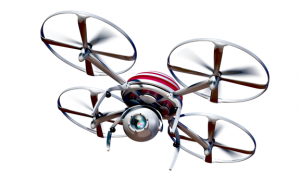Remote sensing is the art or science of obtaining information about an object, an area or a phenomena, through analyzing of data collected by a given device or sensor that has no direct physical contact with the object, area or phenomena being investigated. In simple terms, remote sensing is the process of acquiring data or information about an object without any physical contact. Below are some of the advantages and disadvantages of remote sensing.
Advantages of remote sensing technology:
- Large area coverage: Remote sensing allows coverage of very large areas which enables regional surveys on a variety of themes and identification of extremely large features.
- Remote sensing allows repetitive coverage which comes in handy when collecting data on dynamic themes such as water, agricultural fields and so on.
- Remote sensing allows for easy collection of data over a variety of scales and resolutions.
- A single image captured through remote sensing can be analyzed and interpreted for use in various applications and purposes. There is no limitation on the extent of information that can be gathered from a single remotely sensed image.
- Remotely sensed data can easily be processed and analyzed fast using a computer and the data utilized for various purposes.
- Remote sensing is unobstructive especially if the sensor is passively recording the electromagnetic energy reflected from or emitted by the phenomena of interest. This means that passive remote sensing does not disturb the object or the area of interest.
- Data collected through remote sensing is analyzed at the laboratory which minimizes the work that needs to be done on the field.
- Remote sensing allows for map revision at a small to medium scale which makes it a bit cheaper and faster.
- Color composite can be obtained or produced from three separate band images which ensure the details of the area are far much more defined than when only a single band image or aerial photograph is being reproduced.
- It is easier to locate floods or forest fire that has spread over a large region which makes it easier to plan a rescue mission easily and fast.
- Remote sensing is a relatively cheap and constructive method reconstructing a base map in the absence of detailed land survey methods.
Disadvantages of remote sensing:
- Remote sensing is a fairly expensive method of analysis especially when measuring or analyzing smaller areas.
- Remote sensing requires a special kind of training to analyze the images. It is therefore expensive in the long run to use remote sensing technology since extra training must be accorded to the users of the technology.
- It is expensive to analyze repetitive photographs if there is need to analyze different aspects of the photography features.
- It is humans who select what sensor needs to be used to collect the data, specify the resolution of the data and calibration of the sensor, select the platform that will carry the sensor and determine when the data will be collected. Because of this, it is easier to introduce human error in this kind of analysis.
- Powerful active remote sensing systems such as radars that emit their own electromagnetic radiation can be intrusive and affect the phenomenon being investigated.
- The instruments used in remote sensing may sometimes be un-calibrated which may lead to un-calibrated remote sensing data.
- Sometimes different phenomena being analyzed may look the same during measurement which may lead to classification error.
- The image being analyzed may sometimes be interfered by other phenomena that are not being measured and this should also be accounted for during analysis.
- Remote sensing technology is sometimes oversold to the point where it feels like it is a panacea that will provide all the solution and information for conducting physical, biological or scientific research.
- The information provided by remote sensing data may not be complete and may be temporary.
- Sometimes large scale engineering maps cannot be prepared from satellite data which makes remote sensing data collection incomplete.




Seth Brown
11 Mar 2018Nice
SERAJUL HOQUE
20 Mar 2018Very Nice
admin
20 Mar 2018Thank you 🙂
Erick
19 Jul 2018I think another dissadvantage is that when the satellites develop problems they may end up falling and cause alot of destrustion in that given area.
admin
22 Jul 2018I agree
MyHub Intranet
8 Jun 2019It is a very advantageous post for me. I’ve enjoyed reading the post. It is very supportive and useful post. I would like to visit the post once more its valuable content. Thanks for sharing great info.
Robert kazembe
14 Oct 2019the points are very short and easy to understand thanks for sharing document.
Yawer
12 Nov 2019Nice and too much easy to understand.
Thanku….
Sameer
19 Feb 2020Very helpful
Jigalu S Ngolwaikungu
27 Feb 2020Nice work
admin
29 Feb 2020Thank you
Gilbert
24 May 2020Thanks for such a wonderful content you shared. keep it up
Abraham Sumo
10 Sep 2020Thanks so much for this great and educative lesson
Aleck
14 Oct 2020i greatly appreciate for this wonderful content .Thank you so much
Akambase Lord A
21 Oct 2020Very educative keep it up
Alisha Nesslage
6 Nov 2020This is great, thank you!
Juma Mrisho
21 Dec 2020I’want to know that question on how remote sensing is related to physical geography?
The answer is what
Godwin Etimbrown
7 Jun 2021Thank you for this post. It help me a lot for my incoming exams.
MANGAKU
7 Dec 2021Much appreciated post
More of this wonderful details should prevail
Silas Wekesa
25 Jan 2022Good information..I’ve enjoyed reading the document and captured the content fully
Amone Wilfred
5 Apr 2022I like this post. keep up the spirit and blessings from Jah